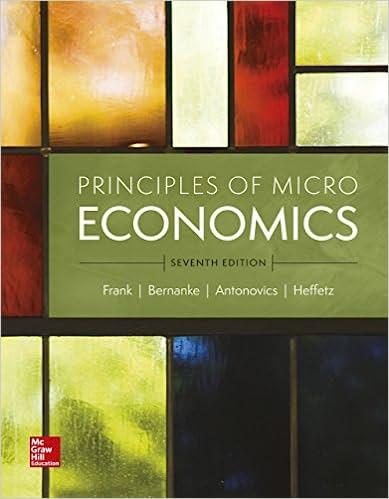Answered step by step
Verified Expert Solution
Question
1 Approved Answer
Consider the following Lagrangian function: Z(I1,K2,) = F(K1,L1) - I1 - w1L1 +[1/(1+r)][F(L2,K2) - w2L2] + [K1(1-) + I1 - K2]. (1) is called the
Consider the following Lagrangian function: Z(I1,K2,) = F(K1,L1) - I1 - w1L1 +[1/(1+r)][F(L2,K2) - w2L2] + [K1(1-) + I1 - K2]. (1) is called the Lagrange multiplier: it has a useful economic interpretation as the shadow price of the constraint, i.e. the benefit the firm would get from a marginal relaxation of the constraint (in this case a marginal increase in K2). (a) Differentiate the Lagrangian function (1) with respect to I1 and set the resulting expression to zero for a maximum. That should give you a simple equation for . How do you interpret this? (b) Differentiate the Lagrangian function with respect to K2 and again set to zero. The equation will involve , which you can eliminate using your answer to part (a). After rearranging the equation you should obtain MPK(K2*) = (1+r). (2) What is the interpretation of (2) and how does it differ from the equation given in the tutorials? (c) Use (2) and explain how is the cost of capital formula modified by the existence of (i) a tax on profits, and (ii) an investment subsidy? Draw a diagram to explain your
Step by Step Solution
There are 3 Steps involved in it
Step: 1

Get Instant Access to Expert-Tailored Solutions
See step-by-step solutions with expert insights and AI powered tools for academic success
Step: 2

Step: 3

Ace Your Homework with AI
Get the answers you need in no time with our AI-driven, step-by-step assistance
Get Started


